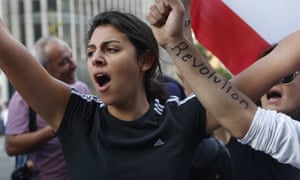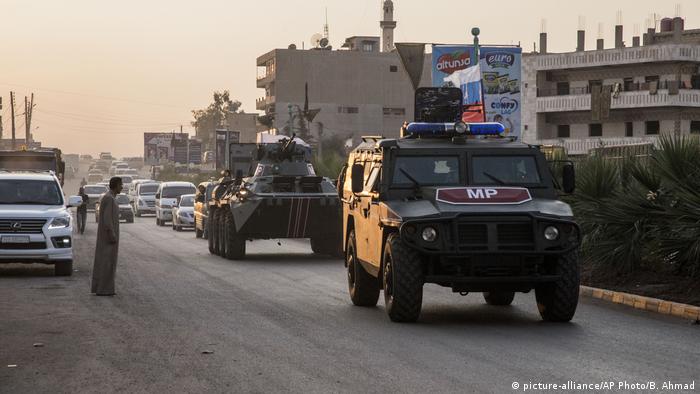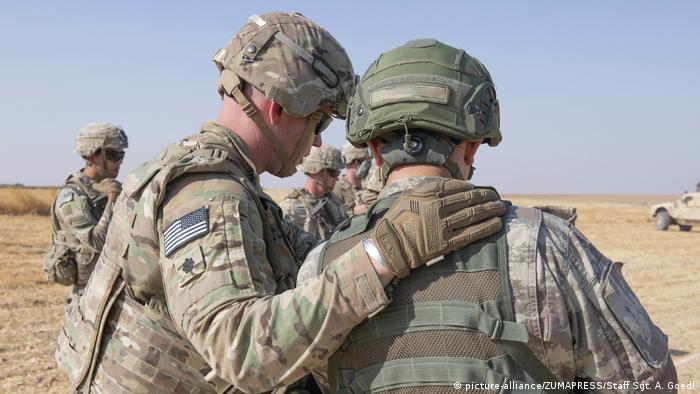This article was submitted in response to the call for ideas issued by the co-chairs of the National Security Commission on Artificial Intelligence, Eric Schmidt and Robert Work. It addresses the first question (part a.) which asks how artificial intelligence will affect the character and/or the nature of war.
Some takes on artificial intelligence (AI) can be over the top. Russian President Vladimir Putin believesAI is key to world domination. SpaceX and Tesla CEO Elon Musk thinks it will be more dangerous than nuclear weapons. Others warn that a dystopian future scenario of killer robots is closer than we think.
A more measured view, and one that I share, is that AI is an “enabler” rather than a weapon. When it comes to national security and defense, AI is best thought of as a suite of technologies and applicationsthat can help militaries solve concrete challenges across a broad range of missions.
One of the most important challenges facing the U.S. military is urban warfare. American forces have seen their share of urban fighting — in Manila, Hue, Mogadishu, Fallujah, Ramadi, Baghdad, and, most recently, as part of the coalition campaign against the Islamic State in Mosul and Raqqa. But as urban warfare experts have pointed out, the U.S. military still needs to improve how it trains, equips, and organizes for operations in dense urban areas. Moreover, as cities grow even larger and more complex, these contested and congested environments will strain the U.S. military’s ability to maintain its technological and operational advantage. Urban settings, therefore, present a good test case for evaluating the benefits, risks, and implications of AI on the battlefield.
AI will amplify the existing characteristics of urban warfare rather than alter them. A closer look into how AI applications for intelligence, surveillance, and reconnaissance (ISR), command and control, force protection, logistics, and sustainment manifest on the urban battlefield bears this out. The speed of high-tempo combat engagements characteristic to urban warfare will likely increase due to AI-enabled ISR and rapid command and control. At the same time, advances in robotics and AI that improve force protection and sustainment are likely to draw out urban campaigns. With countries around the world increasingly investing in military applications of AI and a growing share of conflicts fought in cities, we are likely headed for faster fights but longer wars.
The U.S. Department of Defense should prepare for how the urban environment affects the use and utility of AI-enabled systems and capabilities. The Pentagon should also assess the cumulative effect of implementing AI and machine learning projects for command and control, intelligence, protection, and sustainment, considering these investments could interact in unexpected ways that inadvertently undermine the ability to achieve enduring political outcomes to military operations.
AI Will Lead to Faster Fights
AI-enabled ISR will increase the speed and accuracy of decision-making on the urban battlefield. ISR is one of the promising areas for AI applications in urban warfare because cities produce enormous amounts of data. With advances in high-fidelity sensing, image recognition, and natural language processing, military and intelligence analysts can exploit thousands of publicly available datasets for insights into the demographic, social, economic, and logistical characteristics of cities and their populations.
Automated intelligence processing can be a game-changing capability. Currently, analysts spend hours combing through images and videos captured by unmanned aerial vehicles. Accurate and timely intelligence about the capabilities, location, and activities of the adversary, as well as the city’s terrain, infrastructure, and population, is paramount to success in urban warfare. But the sheer amount of information is overwhelming. Automation has proven useful during the first phase of Project Maven, for example, where the team incorporated computer vision and machine learning algorithms into intelligence analysis and processing in support of the counter-Islamic State campaign.
AI’s potential to improve wartime decision-making through real-time actionable intelligence can also help reduce the risk of casualties, fratricide, and collateral damage in urban warfare. As military operations unfold, they radically alter the terrain. Walls, roofs, and entire buildings can collapse, leaving certain streets impassable. Loyalties and power dynamics change as hostile actors gain and lose ground. Information that was accurate hours or even minutes ago can become irrelevant in a split second. The ability to process information at machine speed, then, is a critical advantage.
The challenges of urban warfare have also pushed the U.S. Army to pursue greater autonomy and swarming capabilities in unmanned aerial vehicles. Such advances will increase the coverage, persistence, and duration of ISR missions, which in turn will enhance soldiers’ situational awareness and provide commanders with additional reaction time in high-stakes situations. The Defense Advanced Research Projects Agency’s Offensive Swarm-Enabled Tactics (OFFSET) program, for example, envisions swarms of 250 collaborative autonomous aerial and ground systems providing capabilities to small ground military units in urban areas where tall buildings, tight spaces, and limited lines of sight hinder communications, sensing, maneuver, and mobility. Now on its fourth sprint, the program is looking to “identify applications of artificial intelligence to discover and learn novel swarm tactics.”
In addition to ISR, AI applications also have important implications for command and control. Ground operations in urban warfare typically become decentralized as forces need to advance through the city’s streets and alleys and enter buildings or underground tunnels, requiring small-unit leaders to make informed decisions independently. At the same time, urban warfare is a combined arms fight that includes light and mechanized infantry, armored forces, close air power support, and enablers such as special operations forces, snipers, and engineers operating in synchronized, close coordination. Flexible and streamlined command and control architecture is therefore not only an advantage but a necessity.
That said, decision-making in modern warfare is exceedingly complex. Soldiers at different levels of command receive information from a huge number of sources and platforms, in different types of formats, often with redundancies and inconsistencies. The Army’s most recent Unified Challenge war game, for instance, highlighted the need for a “real-time digital picture” to track the fast-moving and dispersed forces across domains and a command system that can keep up with the complexity. The Air Force has been working to address this challenge for some time now as part of its Multi-Domain Command and Control initiative. The effort, which aims to centralize planning and execution of air, space, cyberspace, sea, and land-based operations, is still a concept in development. But AI could be used to fuse data from different platforms and military assets and distill it into a common and comprehensive operating picture, which could then improve and accelerate wartime decision-making.
Having more information is only half the battle; people can only process so much. As AI systems mature, there is also potential for using recommender systems technology filtered through an existing political, military, economic, social, infrastructure, information, physical environment, and time effects model to provide commanders with options for action in complex environments. In the future, if AI-enabled recommender systems technology is able to propose courses of action based on real-time analysis of the battlespace (as opposed to past behavior which in complex systems may not predict future behavior), computational support could shift from being reactive to being predictive. This will enable faster adaptation and action in complex operational settings such as urban warfare.
By improving intelligence processing and analysis, AI can help refine collateral damage assessments and enable commanders to make better and faster decisions about target selection and engagement. With AI-enabled data fusing capabilities used to develop a common operations picture, leaders at different levels of command will be able to select and converge on a course of action more quickly. Taken together, these AI applications in ISR and command and control will impact the tactical tempo of operations, making the close-quarters, high-tempo combat engagements characteristic to urban warfare even faster.
But Wars Will Last Longer
Some advances in AI and machine learning may end up prolonging urban conflicts. AI-enabled technologies will improve force protection and sustainment, increasing survivability and reducing military casualties. Better protected and well-supplied soldiers can endure longer wars. And if public opinion remains positive, or even apathetic with respect to protracted missions, leaders will have fewer incentives to stop fighting until victory — whenever (or whatever) that may be. The use of drones, for instance, has enabled the United States to conduct lethal counter-terrorism operations around the world for nearly two decades. Despite conflicting evidence about their effectiveness and numerous instances of civilian casualties, American public opinion remains largely supportive because drone strikes don’t endanger the lives of U.S. military personnel and are considered relatively cheap. AI-enabled systems and capabilities that increase survivability in urban warfare could represent a continuation of this dynamic.
Harnessing the power of AI to improve support for and protection of U.S. service members is a consistent theme across the different strategic documents guiding Department of Defense AI plans. Indeed, across the services, efforts are already underway for the partial automation of ground and air resupply, casualty evacuation, predictive maintenance, and logistics. Human rights advocates have argued that by reducing risk to military personnel, autonomous weapons and systems could decrease the threshold for the use of military force, push leaders toward military adventurism, and even increase the likelihood of unlawful aggression. Less, however, has been said about the possibility that some military applications of AI can make wars last longer.
By shifting the burden of performing dirty and dangerous tasks from humans to machines, the U.S. military will be able to increase force protection and improve survivability in urban warfare. Urban operations tend to result in high rates of military casualties, and regardless of advances in military medicine and body armor, research shows a persistently heavy toll on infantry, a high number of deaths from sniper fire, and widespread mine injuries. Ground troops need armored protection, and hard-fought lessons from combat operations in Mogadishu, Baghdad, Fallujah, and Sadr City illustrate the utility of mobile armored vehicles. The Army’s Optionally Manned Fighting Vehicle (OMFV) — its third attempt to replace the M-2 Bradley Infantry Fighting Vehicle — is therefore of particular interest.
While the M-2 Bradley has faced challenges in urban settings in Iraq — where vehicle and crew losses to mines, improvised explosive devices (IEDs), and anti-tank rockets raised concerns about its survivability and effectiveness in future missions — the OMFV is specifically geared toward “dense urban terrain operations and mobility.” Technical problems with autonomous ground navigations remain a challenge. But with advances in AI, the Army envisions deploying robotic combat vehicles as “scouts” and “escorts” for the manned OMFV to deter ambushes and protect the flank. Using unmanned vehicles in this capacity can increase situational awareness and reduce casualties from sniper fire, mines, and IEDs during dangerous reconnaissance missions and patrols in hostile urban terrain.
Automated ground resupply can help address the intensive demands for supplies, manpower, and logistical and medical support in urban warfare. Reflecting on his deployment with the British Army in Basra, for example, Lt. Col. Ben Baker recently wrote that “urban operations hurt, and resilience — physical, moral and conceptual — becomes king.” Indeed, even for advanced and well-provisioned militaries, logistics delivery is both resource intensive and dangerous, especially at the end of extended supply lines. This is in large part why the U.S. Army is investing in an experimental fleet of robo-trucksthat will move in a “leader-follower” formation with manned vehicles in the lead that, with software improvements, should be able to navigate around obstacles and pull trailers. As a whole, autonomous vehicles — capable of moving “further, faster, with more payload, and into more-dangerous situations” – have the potential to reduce the number of soldiers in harm’s way and improve sustainment.
Overall, advances in robotics and AI for force protection, sustainment, and logistics can improve survivability and resilience under tough battle conditions over greater periods of time. But the decision to end a war is ultimately a political one. High military casualties tend to reduce public support for war, and in democracies, public opinion is an important factor influencing decisions about the use of force. Notably, authoritarian leaders are not immune to domestic pressures, either. Autocratic regimes like those of Syria, Russia, and Saudi Arabia are in fact becoming less willing to send their forces into direct combat where they’re likely to suffer high casualties. Insofar as technological advances promise to safeguard soldiers’ lives, these breakthroughs could then also keep the costs of war from becoming politically prohibitive.
Key Takeaways
AI is a new and still quite vulnerable technology — it is susceptible to training data poisoning and manipulation by adversarial actors, may fail when confronted with tasks or environments different from those it was trained for, and behaves in unpredictable ways due to its opaque algorithms. And regardless of what Putin or Musk prognosticate about its effect on power and war, nobody can predict the future. Global urbanization trends and patterns of armed conflict, however, suggest that future conflicts will increasingly take place in cities. As the Department of Defense moves to implement its AI strategy, both civilian and military decision-makers should therefore explicitly address the role of AI in urban warfare. This should include an assessment of whether existing training, tactics, techniques, and procedures for urban operations allow for the effective use of AI-enabled systems and capabilities. Most importantly, defense officials need a comprehensive view of AI-related initiatives across the department to better anticipate the effects of fielding different AI-enabled systems and capabilities on tactical, operational, and strategic objectives.
AI technology will make a difference in urban warfare — but it is a difference in degree, not a difference in kind. In urban conflicts, individual engagements tend to be high tempo, and AI will make them even faster through better ISR and rapid command and control. Fighting in cities is costly and protracted. Yet, by enhancing force protection, sustainment, and logistics, and, in turn, reducing the political costs of protracted military engagements, investments in AI could inadvertently make these wars last even longer.
This analysis has focused on how AI impacts the character of war — how wars are fought and evolve under the influence of major political, social, and technological changes and contextual factors. However, it’s worth noting a potential impact on the nature of war — the essence of conflict, a violent, inherently political phenomenon marked by friction and uncertainty, which most scholars still believe is unalterable. Some of the assessments that imagine AI will change the nature of war claim this will happen because the speed of engagement between autonomous systems fighting each other will effectively push humans out of the loop in life-and-death decisions. And without humans making political decisions, war could no longer be described as “politics by other means.”
Advances in autonomy and AI that help reduce the risk to military personnel and improve sustainment could potentially alter the political and economic calculus of continuing rather than starting wars. Thus, while AI could drive a wedge between politics and war, it’s not because AI will help replace humans with machines. Rather, it is because AI will change the relationship between different groups of humans, i.e., the military, the civilian leadership in charge of decisions about the use of force, and the public that either supports or censors these decisions.
War in the age of AI will remain the continuation of politics by other means. But as technology drives down the political price leaders pay for their decisions about war and peace, and war becomes cheap, then why stop fighting? The ethical implications of both gradual and disruptive technological innovations that could change civil-military relations, political power, and the ways wars are waged are profound. And it’s precisely these questions, rather than sensationalized depictions of self-aware terminators and self-directed drone swarms, that should keep us up at night.
warontherocks.com
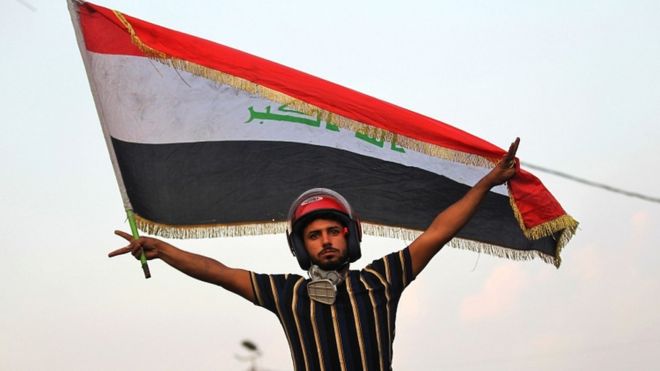 Image copyrightAFP
Image copyrightAFP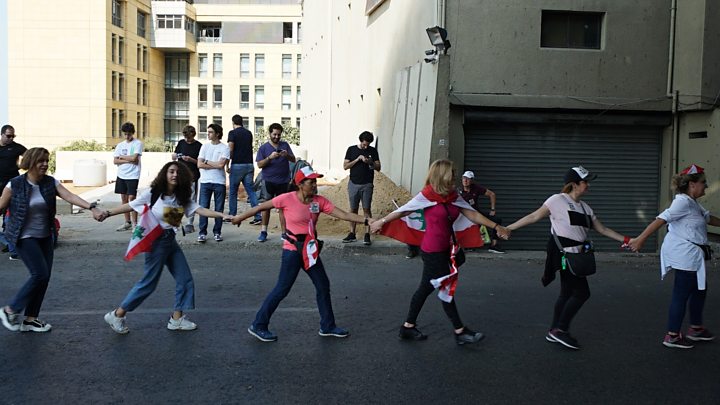
 Image copyrightEPA
Image copyrightEPA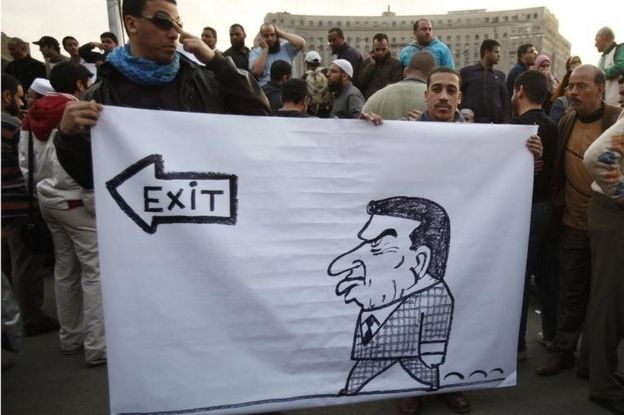 Image copyrightREUTERS
Image copyrightREUTERS
